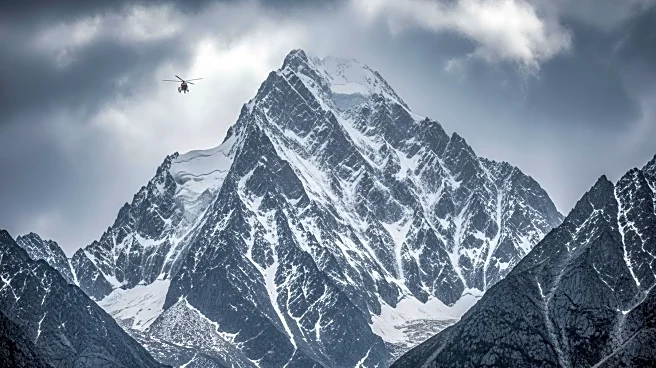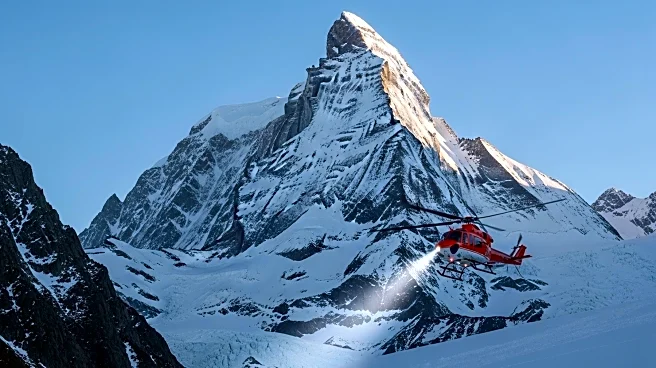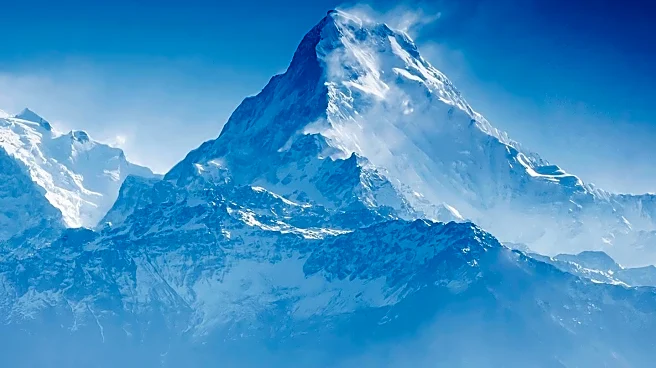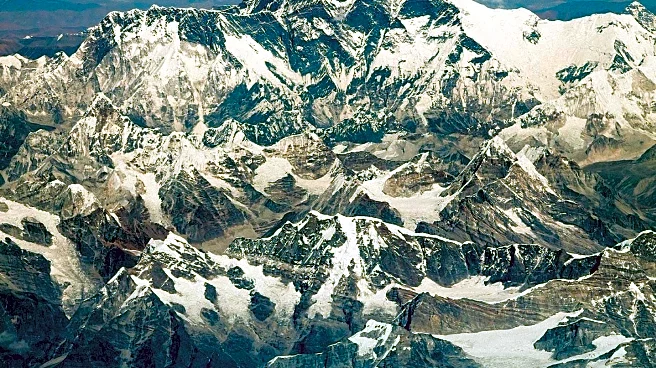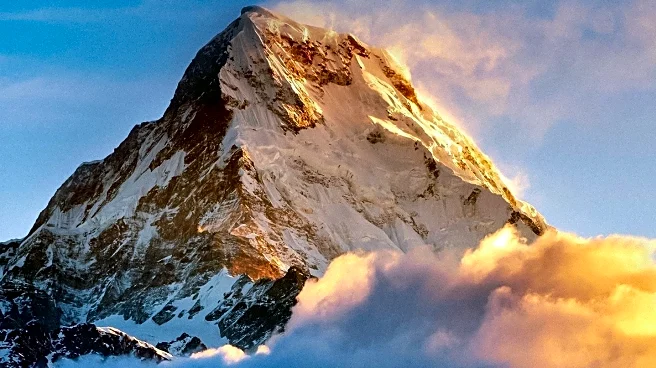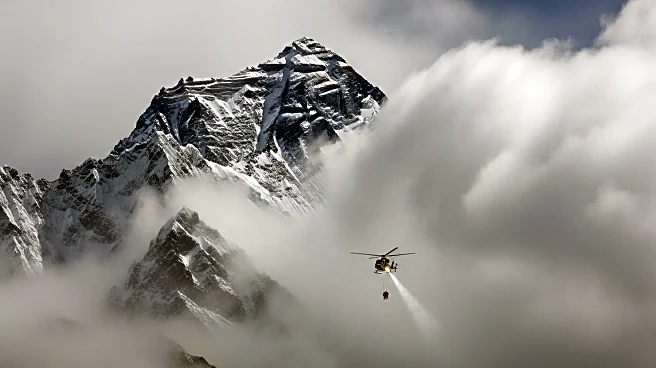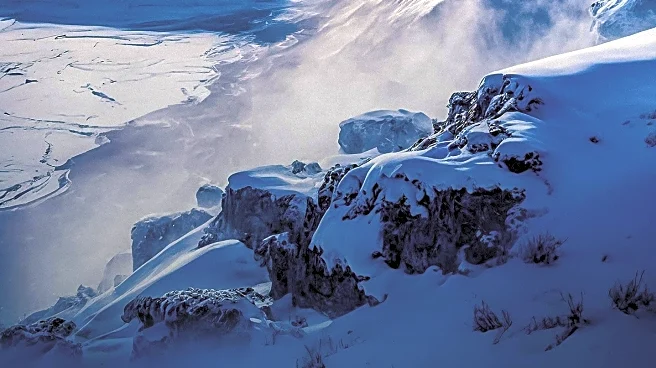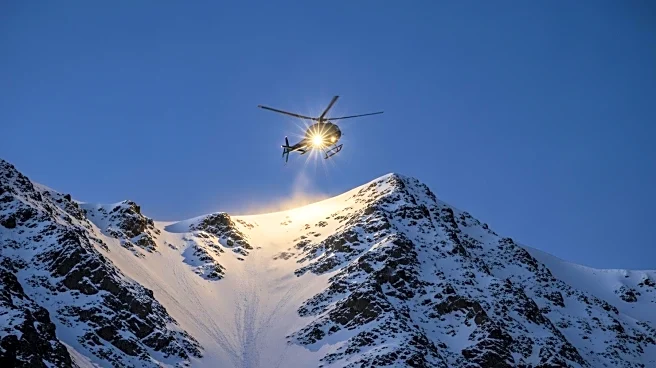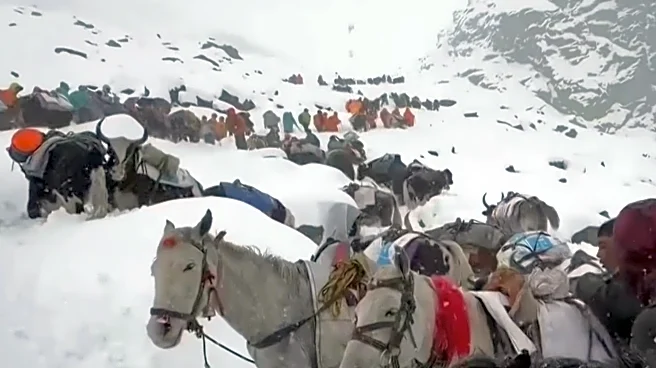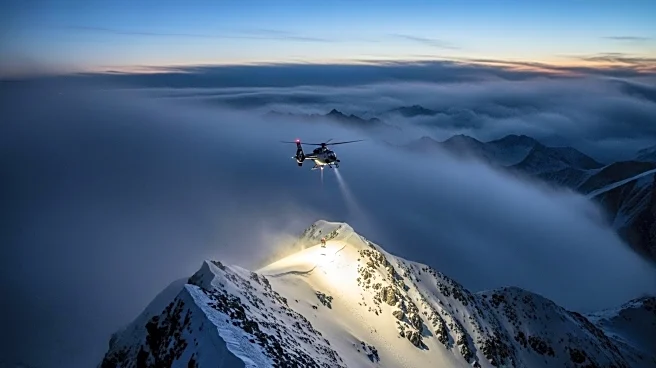What's Happening?
Rescue operations are ongoing for hundreds of hikers trapped on Mount Everest due to an unexpected heavy snowstorm. The blizzard struck during a busy tourist season, affecting campsites at an elevation of 16,000 feet on Everest's eastern slope. Chinese state media reported that 350 hikers have reached a rescue point in Qudang, Tibet, while contact has been established with over 200 others still stranded. The snowstorm began late Friday, covering the area with snow up to one meter deep. Some hikers have been treated for hypothermia, but no fatalities or injuries have been reported. Videos on social media show hikers navigating through deep snow and tents partially buried by the storm.
Why It's Important?
The incident highlights the risks associated with high-altitude tourism, especially during peak seasons when weather conditions can change rapidly. The snowstorm coincided with China's national holiday, attracting thousands of tourists to the region. The situation underscores the need for better preparedness and safety measures for tourists visiting such extreme environments. The successful rescue of the hikers without reported fatalities is a testament to the effectiveness of the emergency response teams. However, the event raises questions about the adequacy of current safety protocols and the preparedness of tourists for sudden weather changes.
What's Next?
Rescue teams are expected to continue their efforts to evacuate the remaining stranded hikers. Authorities may review and potentially enhance safety guidelines for tourists visiting Mount Everest, especially during peak seasons. The incident could lead to increased scrutiny of tour operators and their preparedness for emergencies. Additionally, there may be discussions on improving weather forecasting and communication systems to better inform tourists and prevent similar situations in the future.

